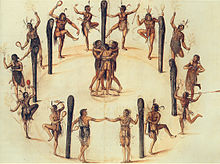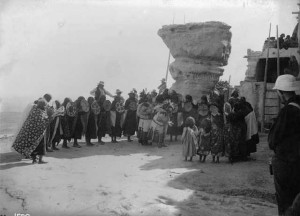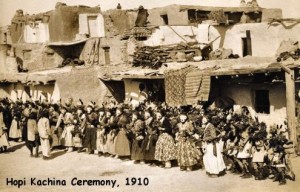White society saw Native American dancing in two ways: immoral and/or depraved, or as perfectly acceptable cultural expression (see last two posts). Native Americans often pointed out that their dances were not as immoral as white dancing, which included close physical contact as well as uninhibited movements. Many native dancers took care that there was plenty of space between participants, and white commentators appreciated the parody and moral lessons that were included in much of the clown dancers’ pantomime.
Dance defenders took the view that Native American dances were religious and should be protected for that reason, particularly those of the Pueblo whose religious freedom was specifically protected by the treaty of Guadalupe Hidalgo. Other defenders saw ceremonial dances as cultural treasures that ought to be protected in the same way that other customs and folkways were. They also noted that the supposedly “immoral” clown dancer behavior was an important aspect of fertility rituals.
(Some Native Americans did oppose dancing because they had become Westernized after attending Indian boarding schools. They rejected much of their native culture, just as the federal government had hoped, and refused to participate in these important social ceremonies.)
By the end of the 1920s, much of the controversy had faded. Commissioner of Indian Affairs John Collier rescinded the bans on dancing with Circular 2970, “Indian Religious Freedom and Indian Culture.” The circular specified that: “No interference with Indian religious life or ceremonial expression will hereafter be tolerated.”








